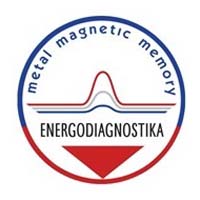In general, MMM is an after effect which is directly correlated with the distribution of natural magnetic feilds and the accumulated stress-stran which has been experienced by the ferrous or paramagmetic material.
 |
It is an ISO 24497:2007 recognised passive inspection technology. |
 |
Energodiagnostika Pte Ltd is the sole developer of this technology |
Stress Detection Utilizing Metal Magnetic Memory
Metal Magnetic Memory (MMM) is an after effect which occurs as residual magnetization in parent metal or welded joint formed in the course of fabrication or due to irreversible change of the local magnetization state of parent metal/inspection object in zones of stress concentration or damage under loadings. In general, MMM is an after effect which is directly correlated with the distribution of natural magnetic fields and the accumulated stress-strain which has been experienced by the ferrous or paramagnetic material.
Stress Detection Utilizing Metal Magnetic Memory
Metal Magnetic Memory (MMM) is an after effect which occurs as residual magnetization in parent metal or welded joint formed in the course of fabrication or due to irreversible change of the local magnetization state of parent metal/inspection object in zones of stress concentration or damage under loadings. In general, MMM is an after effect which is directly correlated with the distribution of natural magnetic fields and the accumulated stress-strain which has been experienced by the ferrous or paramagnetic material.
HOW METAL MAGNETIC MEMORY WORKS
MMM Technology are divided in two main types namely contacting and non-contacting MMM.
The contact MMM technology has been used in various engineering field such as oil and gas industry, power generation, aviation, railway transport, sea transport and metal structures. This technology can be applied to inspect stress condition in the welding, normal surface sorunder insulation without removing the insulation.
- The technology is direct-contact with inspection object obtaining the position and actual stress condition of the inspection object
This video is made to show demonstration of Non-Contact inspection of buried pipeline by using MMM sensor. Wheel is used only for measuring the distance and vertical rod kind of thing is MMM sensor with 6-channels of magnetic sensor (3 on top side and three on bottom).
